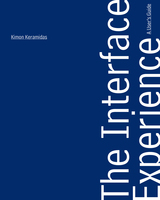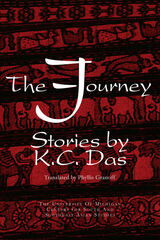3 books by Das, K.

All This Music Belongs To Nation
The WPA's Federal Music Project American Society
Kenneth J. Bindas
University of Tennessee Press, 1995
Established in 1935 under the aegis of the Works Progress Administration, the Federal Music Project (FMP) was designed to employ musicians who were hard hit by the economic devastation of the Great Depression. All of This Music Belongs to the Nation is the first book-length study of the FMP and the many paradoxes and conflicts that marked its four-year existence.
As Kenneth J. Bindas points out, the FMP leadership was more conservative than that of the sister projects in art, theater, and writing. Its stated aim of "raising" the taste of musicians and citizens alike created a particular problem. Although many unemployed musicians came from the sphere of popular music, such as jazz and Tin Pan Alley, the FMP chose to emphasize "cultured" music, particularly the orchestral works of composers in the European classical tradition. Inevitably, this created tension within the project, as those musicians deemed "popular" received second-class treatment and, in the case of racial and ethnic minorities, were segregated and stereotyped. Despite these troubles, Bindas demonstrates, the FMP succeeded in bringing music to millions of listeners across the country.
As Kenneth J. Bindas points out, the FMP leadership was more conservative than that of the sister projects in art, theater, and writing. Its stated aim of "raising" the taste of musicians and citizens alike created a particular problem. Although many unemployed musicians came from the sphere of popular music, such as jazz and Tin Pan Alley, the FMP chose to emphasize "cultured" music, particularly the orchestral works of composers in the European classical tradition. Inevitably, this created tension within the project, as those musicians deemed "popular" received second-class treatment and, in the case of racial and ethnic minorities, were segregated and stereotyped. Despite these troubles, Bindas demonstrates, the FMP succeeded in bringing music to millions of listeners across the country.
[more]

The Interface Experience
A User's Guide
Kimon Keramidas
Bard Graduate Center, 2015
The last forty years have seen the rise of the personal computer, a device that has enabled ordinary individuals to access a tool that had been exclusive to laboratories and corporate technology centers. During this time, computers have become smaller, faster, more powerful, and more complex. So much has happened with so many products, in fact, that we often take for granted the uniqueness of our experiences with different machines over time.
The Interface Experience surveys some of the landmark devices in the history of personal computing—including the Commodore 64, Apple Macintosh Plus, Palm Pilot Professional, and Microsoft Kinect—and helps us to better understand the historical shifts that have occurred with the design and material experience of each machine. With its spiral-bound design reminiscent of early computer user manuals and thorough consideration of the cultural moment represented by each device, The Interface Experience is a one-of-a-kind tour of modern computing technology.
The Interface Experience surveys some of the landmark devices in the history of personal computing—including the Commodore 64, Apple Macintosh Plus, Palm Pilot Professional, and Microsoft Kinect—and helps us to better understand the historical shifts that have occurred with the design and material experience of each machine. With its spiral-bound design reminiscent of early computer user manuals and thorough consideration of the cultural moment represented by each device, The Interface Experience is a one-of-a-kind tour of modern computing technology.
[more]

The Journey
Stories by K. C. Das
Phyllis Granoff, Translator
University of Michigan Press, 2000
K. C. Das is deservedly one of the most celebrated writers in India today. He writes primarily in Oriya, the language of his native state of Orissa, where he was born in 1924. A civil servant by profession, Das pursued a second career as a writer of stories, poems, and essays.
The stories in this collection take place in an urban setting. The characters are mainly middle class, making them more accessible to North American readers than other examples of contemporary Indian fiction. These are not simple stories. They are about “divides,” about gaps between realities and imagination. In complex shifts between direct dialogue, interior monologue, and interior or imagined dialogue, Das lovingly but mercilessly exposes his characters' thoughts, self-deceptions, and the games they play with each other. These are stories about human weaknesses, the fallibility of human relationships, and the strategies we adopt to cope with our failures. They are about coming to terms with unpleasant, sometimes shocking truths about ourselves and others.
[more]
READERS
Browse our collection.
PUBLISHERS
See BiblioVault's publisher services.
STUDENT SERVICES
Files for college accessibility offices.
UChicago Accessibility Resources
home | accessibility | search | about | contact us
BiblioVault ® 2001 - 2024
The University of Chicago Press









